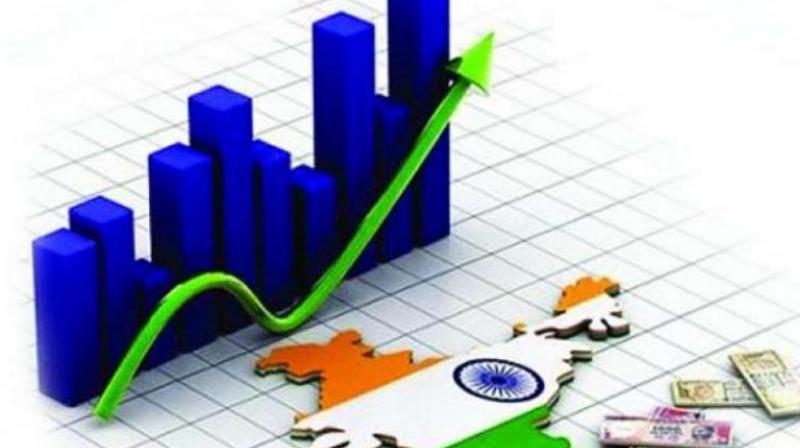Economy seen growing at steady 7.6 per cent pace in April-June: report
Retail inflation rate slowed in July to a four-month low of 4.17 pc, slightly above the central bank's 4 pc medium-term target.

Bengaluru: India likely grew 7.6 per cent in the April-June quarter, propelled in part by an improvement in manufacturing and exports, a Reuters poll showed.
The median consensus in a poll of 50 economists put annual economic growth just a touch lower than the near two-year high of 7.7 per cent in the January-March quarter.
Forecasts for the $2.59 trillion economy ranged between 7.0 and 8.0 per cent.
The poll results suggest domestic demand was strong, driven primarily by manufacturing activity that remained solid despite elevated oil prices and a weakening Indian rupee.
“India is a domestic-driven economy – so a recovery in private consumption can outweigh external headwinds,” said Charu Chanana, economist and market strategist at Continuum Economics.
In the April-June 2017 quarter, India reported relatively weak annual growth of 5.6 per cent, as manufacturing activity contracted.
The Indian economy was hit by the November 2016 government decision to withdraw over 80 per cent of cash. The transition to a national goods and services tax, effective in July 2017, also impacted the economy.
If the median prediction for the April-June quarter proves correct, it was will be the third period in a row with 7 per cent or higher growth.
India is now “seeing good momentum in manufacturing. Corporate results for April-June quarter have corroborated the improving demand conditions in the economy,” said Shubhada Rao, chief economist at Yes Bank.
“Corporate earnings data, the PMIs have corroborated the expansion and the recovery story,” Rao added.
Still, a few economists expect a slight slowdown in growth due to greater global economic uncertainty and domestic political risks from national elections scheduled for May 2019.
The Indian government’s preferred growth measure, gross value added (GVA), is predicted to have marginally declined to 7.5 per cent from 7.6 per cent the previous quarter, hampered by weak agriculture growth.
India’s fiscal deficit widened in the April-June quarter to 68.7 per cent of the budgeted target for this fiscal year, a concern but an improvement 80.8 per cent for the same period of 2017.
This should provide some comfort to the Reserve Bank of India which raised its key rate to 6.5 per cent at its August 1 policy meeting to try and rein in above-target inflation.
The retail inflation rate slowed in July to a four-month low of 4.17 per cent, slightly above the central bank’s 4 per cent medium-term target.
The consumer price index has been above-target for nine consecutive months due to higher oil prices and a depreciating rupee.
Although the RBI remains concerned about inflation, policymakers there still expect economic growth of 7.4 per cent in the current fiscal year, which ends in March 2019.

